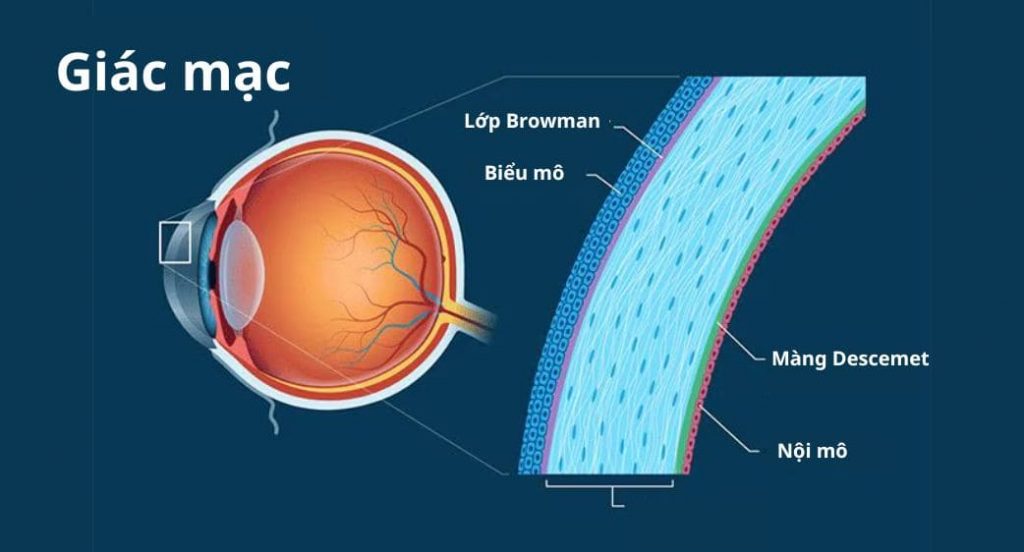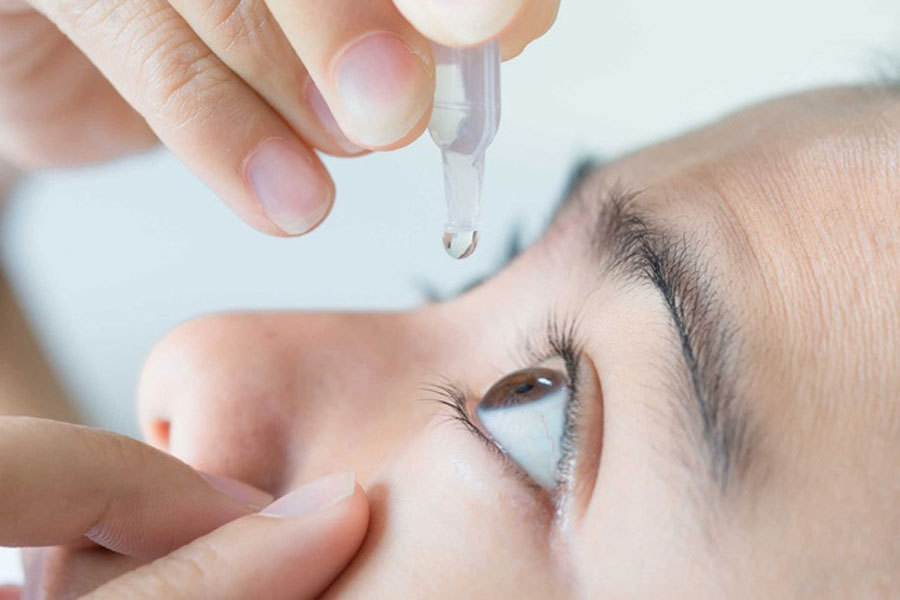The cornea is the transparent membrane covering the front of the eyeball. It not only acts as a protective shield but also plays the most critical role in focusing light onto the retina. In fact, the cornea is responsible for up to 70% of the eye’s total refractive power — more than the lens itself. Therefore, any damage or deformation to the cornea directly affects visual quality.

Anatomical structure of the cornea with basic layers
Corneal Structure: Small but Mighty
| Layer | Main Function |
|---|---|
| Epithelium | Protects from bacteria and dust; helps heal minor scratches |
| Stroma | Makes up 90% of corneal thickness; maintains curvature for light refraction |
| Endothelium | Pumps fluid out, keeps cornea clear, prevents swelling |
Even minor damage to any layer can significantly reduce visual clarity.
Read more about refractive errors here
The Cornea and Its Role in Light Refraction
Unlike the lens — which adjusts focus by changing shape — the cornea has a fixed curvature. This means even small structural changes can cause light to focus incorrectly:
| Refractive Error | Corneal Contribution |
|---|---|
| Nearsightedness (Myopia) | Cornea too curved → light focuses in front of the retina |
| Farsightedness (Hyperopia) | Cornea too flat → light focuses behind the retina |
| Astigmatism | Irregular corneal shape → distorted or blurred images |
When the Cornea Is Damaged: More Than Just Blurry Vision
Several corneal conditions can silently impair vision if not detected early:
- Keratitis: Caused by bacteria, viruses, fungi, or poor contact lens hygiene.
- Keratoconus: Cornea gradually thins and bulges into a cone shape, often starting in adolescence.
- Corneal Scarring: From trauma, surgery, or chronic inflammation; distorts light transmission.
How to Keep Your Cornea Clear and Healthy

Using eye drops properly helps hydrate and protect the cornea
- Do not rub your eyes, especially with unclean hands
- Wear protective glasses when exposed to dust or chemicals
- Clean your contact lenses properly and follow recommended wear times
- Have regular eye exams to detect any corneal abnormalities early
Phakic ICL – A No-Touch Cornea Solution

Simulated image of Phakic ICL positioned behind the iris
If you have high myopia, thin corneas, or chronic dry eyes, laser surgeries like LASIK may not be suitable. In such cases, Phakic ICL is a safe and effective alternative.
Phakic ICL is a soft, biocompatible lens implanted between the iris and natural lens. It doesn’t alter the corneal tissue, doesn’t cause dry eyes, and can be removed if needed.
| Criteria | Phakic ICL |
|---|---|
| Corneal cutting required | No |
| Suitable for thin corneas | Yes |
| Causes dry eyes | No |
| Removable if needed | Yes |
| Recovery time | Quick – usually 1–2 days |
Ideal Phakic ICL Candidates:
- Myopia from -3.0D to -20.0D; Astigmatism from 1.0D to 4.0D
- People with thin corneas or prone to dry eyes
- Those seeking rapid visual recovery, day and night clarity
Note: Before undergoing refractive surgery, your corneal measurements, refractive stability, and eye health must be evaluated thoroughly by a specialist.
The cornea may only be 0.5 mm thick, but it’s the lens that defines your vision. Take proper care of it to keep your eyes clear and healthy every day.

 vi
vi 14-Jun-2025
14-Jun-2025










 0916.741.763
0916.741.763 Appointment
Appointment